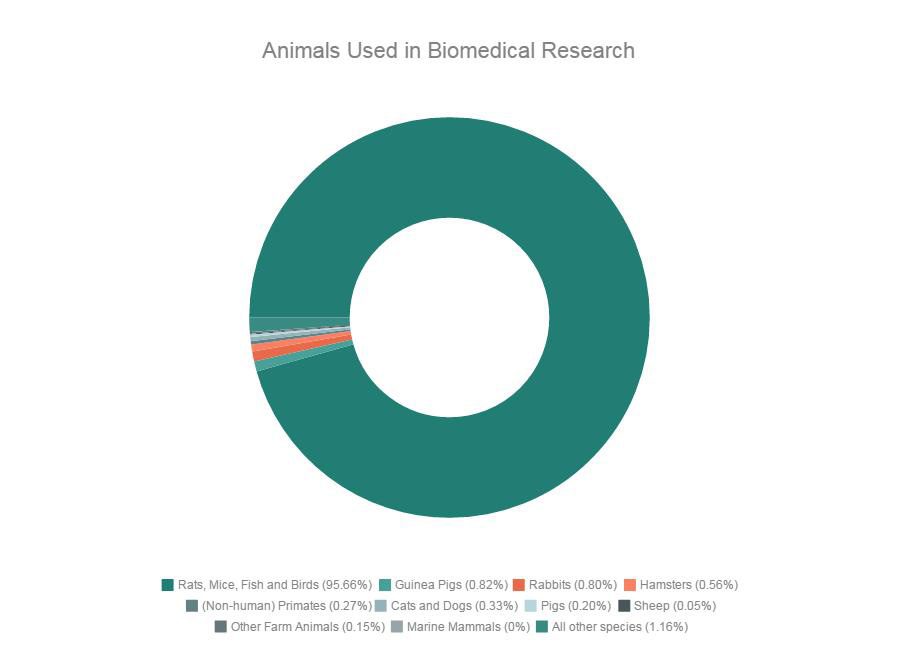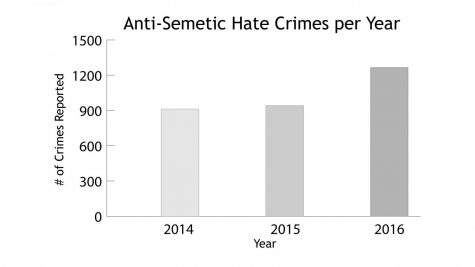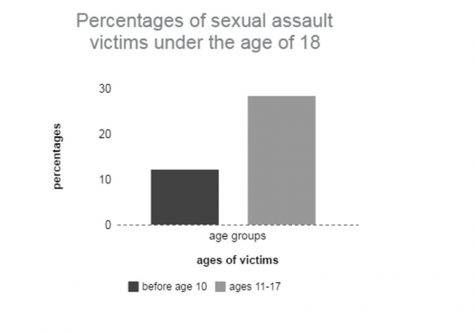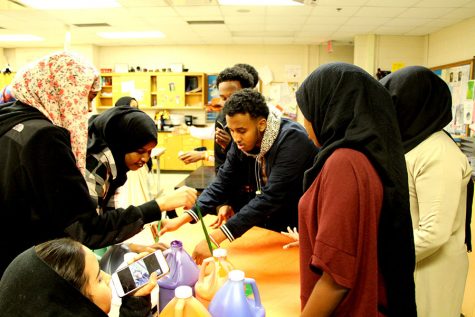Biomedical animal research should be the least of our animal welfare concerns
17 to 23 million animals are used in the United States for biomedical research each year, and that number is on the decline. The vast majority of these animals are mice, rats, fish, or birds. Animals used in biomedical research should be the least of our animal welfare concerns. Nearly ten billion animals are killed for food in the U.S. each year making the number of animals used in research appear rather insignificant. Statistics used in the graphic are from the Hastings Center in 2010. Graphic: Madeline Mahoney
On Allison Gurney’s last day as our AP Biology student teacher, we learned about the use of animals in biomedical research. After Gurney’s presentation on her experience with animal research, we participated in a class activity. Students stood in one of the four corners of the room, each of which represented a different stance on the use of animals in biomedical research: strongly opposed (to testing on the animal displayed on the board), opposed, not opposed, and strongly not opposed. First small fish were shown, then mice, then larger animals. When the small fish and mice were displayed the majority of students stood on the not opposed side of the room but when larger animals were shown that ratio flipped. I stood in the not opposed corner the entire time.
After the class ended I felt confused. Why would so many people denounce animal testing for biomedical research when it has the potential to benefit so many? As a lifelong vegetarian, I do have many concerns about the mistreatment of animals. I am opposed to animal testing for cosmetic purposes or when it could be replaced by computer models. I am also opposed to any type of animal abuse and the unnecessary use of animals in medicine.
However, I do not consider the use of animals for biomedical research inhumane. As Gurney said regarding animal research: “I recognize its use to improve human life. So I think about the advances we have made in cancer, or the advances we have made with different immune diseases, or the HIV/AIDS epidemic. A lot of that has come through using animal models because you can’t really get that same information just by using a computer model,” she said. Gurney is right, according to the Foundation for Biomedical Research, animal research has led us to many advancements – e.g. the polio vaccine, the eradication of smallpox, treatments for asthma, antibiotics and successful organ transplants, just to name a few. Animal testing has played an important role in many of the medical advancements we have made today.
Animal testing has even helped extend the lives of our furry friends. It has led to vaccines that can prevent feline leukemia and tetanus. Animal research has also aided the search of treatments for heartworm, a sometimes fatal disease that most commonly affects dogs.
The process of obtaining animals for research is also very strict, as it should be. “Before you even have an idea, you have to be attached to some kind of research institute… you have to have funding for it, usually through a grant, usually through the National Institute of Health (NIH)… Then you write a protocol and describe the objective of your study and the big thing in there is they want to know what you’ll be using the animals for…. And you always have to justify the number of animals you will be using because they want you to use minimum number of animals possible,” Gurney summarized.
Physician Rachel Hajar discusses the 3Rs campaign in her paper, Animal Testing and Medicine: replace animals with technology, reduce the number of animals, and refine the experiments to minimize animal suffering. This campaign is important. Although I am not opposed to animal research I do believe that the minimum number of animals should always be used.
As Gurney described to me, the researcher’s protocol is then submitted to IACUC (The Institutional Animal Care and Use Committee). Most universities have an IACUC that will review and approve the protocol. The scientist then has to justify how their experiment will advance scientific knowledge. If the experiment is approved it will be monitored by AAALAC (the Association for Assessment and Accreditation of Laboratory Animal Care International), a private non-profit organization. These regulations help ensure that animal research remains humane.
According to the Foundation for Biomedical Research, if we were to halt animal testing for the purpose of biomedical research there would be little hope of finding cures for the millions of people who suffer from diabetes, Alzheimer’s, or other devastating diseases.
If we are interested in stopping the inhumane treatment of animals the best place to start would be the meat industry. According to the New York Times, slightly under ten billion animals are killed for meat each year in the United States alone. For comparison, approximately 17 to 23 million animals were used in biomedical research, according to the Office of Technology Assessment. Keep in mind that ninety-five percent of these animals are rats, mice, and other comparable animals. It seems irresponsible and hypocritical that many of us are willing to publicly denounce animal testing while still contributing to the outrageous mistreatment of animals in the meat and dairy industries.
Should we always advocate for the humane treatment of animals? Yes, of course. But let’s drop the self-righteous attitude about animal research (something you will likely benefit from in your lifetime) and instead focus on the animals of the meat and dairy industries who live in appalling conditions. These animals are harmed without providing many benefits to anyone.

Madeline Mahoney has been contributing to the Southerner for three years now. She started as a Staff Writer and has made her way to becoming this year's...











